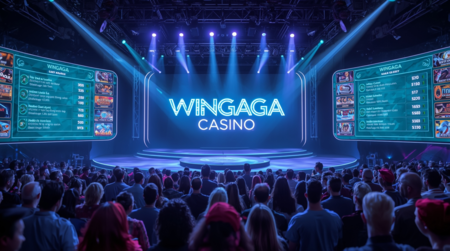
There was a time when prime-time television dictated how people spent their evenings. Families sat down to game shows, variety programs, and live broadcasts that shaped cultural memory. But the modern era has rewritten those habits. Today, live casino has stepped into the role once held by television: it entertains, connects, and keeps audiences engaged in real time.
Platforms like Wingaga Casino have been at the center of this evolution, turning digital tables into interactive stages where the line between show and game disappears.
From Simple Feeds to Studio-Quality Shows
In its earliest form, live casino was little more than a webcam pointed at a dealer. Functional but hardly captivating, it offered a practical way to mimic the casino floor. Over time, this model transformed. What was once a stream is now a production.
Studios resemble professional broadcast environments, complete with set design, lighting rigs, and multi-angle filming. Dealers are trained to engage as hosts, and the experience feels closer to a television show than a static gambling session. The difference? Players are not just watching — they’re participating.
The Dealer as the Presenter
Television succeeded on the strength of its hosts. Charismatic personalities could carry entire programs. Live casinos use the same formula. Dealers are no longer background figures; they are the center of the performance.
At Wingaga Casino, dealers act as entertainers as much as facilitators. They speak directly to players, create atmosphere, and transform routine card flips into shared moments of anticipation. This performative role makes live casino more engaging, especially for audiences who expect personality-driven content.
From Audience to Participant
Unlike television, where the viewer’s role is passive, live casino makes the audience part of the story. Bets placed, strategies chosen, and conversations in chat all shape the flow of the session. The program does not simply “happen” to viewers — it happens with them.
This interactivity explains why live casino has become more addictive than traditional broadcasting. Every game is unique because players themselves are part of the production.
Beyond Borders and Time Zones
Television is limited by schedules and regional networks. Live casino exists outside those restrictions. A game streamed from one studio can be joined by players across continents simultaneously.
Casinos like Wingaga Casino lean into this global reach by providing streams in multiple languages and designing formats that appeal to diverse audiences. The result is an entertainment product that feels both international and personalized.
Influenced by Streaming Culture
The rise of platforms like Twitch and YouTube redefined how people consume live content. Audiences no longer wanted static shows — they wanted interactivity, chat, and community. Live casino embraced these expectations.
The overlap is clear: a live casino session feels much like a game stream, except the stakes are real, and the player is not just an observer but an active participant. For younger audiences raised on streaming, the format feels natural.
The Technical Backbone
Behind every live casino is a sophisticated technical infrastructure. High-definition video, multiple camera setups, real-time overlays, and interactive betting systems ensure that sessions run smoothly.
Wingaga Casino invests in this backbone to maintain stable connections, crisp visuals, and responsive interfaces. Without these elements, the illusion of a broadcast-quality production would collapse. Technology makes the show possible — and ensures it feels seamless for a global audience.
The Social Dimension
Television once gathered families in living rooms; live casino gathers communities online. Players talk, cheer, and share wins with strangers across the world. Chat boxes become miniature social hubs, turning gambling into something collective rather than solitary.
This communal element is part of what makes live casino the new “television” of gambling. It doesn’t just entertain — it connects.
Why Live Casino Surpasses TV
Several reasons explain why live casino has become more compelling than traditional broadcasting:
- Interactivity makes players part of the outcome.
- Global access removes geographic and time restrictions.
- The variety of formats — from roulette tables to game-show hybrids — surpasses fixed television schedules.
- Communities form around play, replicating and surpassing the shared moments once created by television.
Platforms such as https://wingagaga.com/ demonstrate how these advantages combine into a powerful new form of entertainment.
Looking Ahead: The Next Stage of Live Casino
The evolution of live casino is only beginning. As virtual reality and augmented reality mature, broadcasts will become even more immersive. Players may soon find themselves walking through digital studios, interacting with avatars of other participants, or competing in narrative-driven casino shows.
Hybrid formats will likely dominate, blending the unpredictability of gambling with the scripted energy of entertainment programming. Seasonal specials, themed events, and crossovers with pop culture could make live casinos resemble full-fledged channels of their own.
A New Prime-Time for Gambling
Television once owned the role of shared evening entertainment, but in the gambling industry, that role now belongs to live casino. It blends showmanship, interactivity, and community into a format that captivates global audiences.
Casinos like Wingaga Casino have led this transformation, turning live dealer sessions into digital productions that rival traditional broadcasts.
The future belongs to platforms that understand this convergence. Live casino has become more than a game or a broadcast — it is the new prime-time stage of gambling, where every card flip, spin, and bet is part of a shared, ongoing show.
